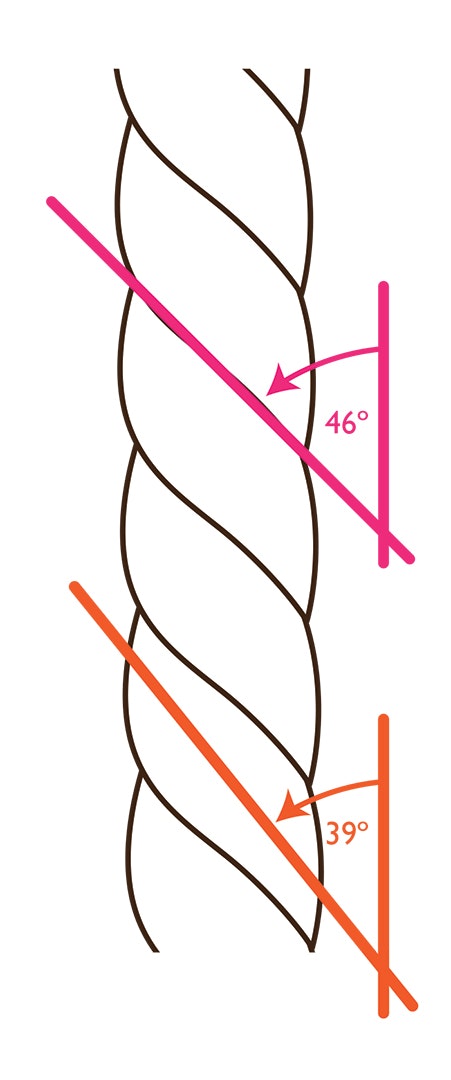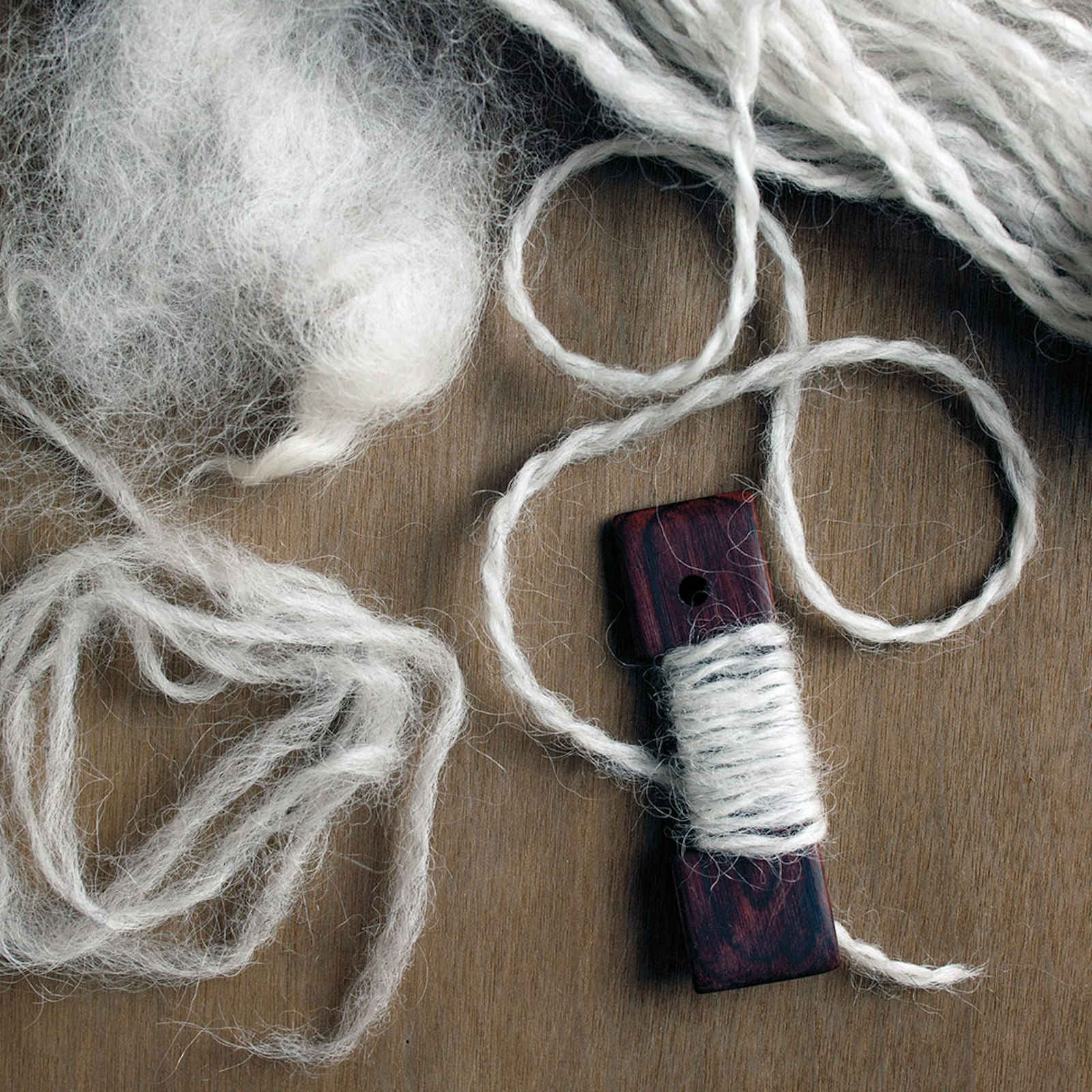When you’ve discovered that you’ve underplied your yarn, should you fix it by adding more ply twist? Perhaps not. Underplied yarn has a very beautiful use—lace! Even in underplied yarn, the active twist in the singles makes the yarnovers open wide in lace when knitted.
So if underplied yarn is your goal, how do you get there? Save a freshly spun sample, folded in half and plied upon itself. Then as you ply the rest of the singles, compare it to this balanced sample and adjust your spinning so that it has less ply twist than the sample.

The pink line shows the twist angle of the S-plied yarn when balanced; the orange line shows an underplied twist angle.
How much less twist? You want your plied yarn to have active singles twist so the yarnovers will open wide, but you don’t want it to be almost unplied (and likely to fall apart). Underplied skeins should twist about four to six times when freshly finished and hung open. You’ll also notice that the skein twists on itself in the ply direction when it is underplied. You can explore the relative amount of underply and its effect on lace, or you can simply aim for underplied yarn and enjoy the resulting lace.
Underplied yarn is often achieved by beginning spinners because they ply stale singles and then look for balance in the ply when twist is dormant in the singles. So another way to underply is to act like a beginner: let your singles rest and then ply them as if the singles were fresh. Silk needs only a few days to do this, while moderately twisted wool will need about a week. Ply so the yarn acts relaxed at the wheel or spindle as it is plied. When the skein is finished with steam or through washing in warm soapy water, the singles’ twist will reappear and the skein will be underplied.
One last point—finishing should be gentle. Wash your skein with a warm water soak and similar temperature in the rinse. Don’t agitate it. Squeeze out the water by rolling it up in a towel and pressing the water out and then lay your skein in an open circle on a flat surface to dry—either on top of a towel or just on the countertop—rather than hanging it with a weight to dry. Flat drying lets the skein keep its elasticity and active twist.
Once dry, your skein is ready for an adventure in lace.
Resources
- Garripoli, Amelia. “Spinning Tips: Reviving Sleeping Twist.” Spin Off Summer 2010, p. 32.
This article was first published in Spin Off Winter 2011.
Also, remember that if you are an active subscriber to Spin Off magazine, you have unlimited access to previous issues, including Winter 2011. See our help center for the step-by-step process on how to access them.
Amelia Garripoli spins, knits, weaves, and dyes in her new home in Port Ludlow, Washington. She published Productive Spindling in 2009 and sells spinning e-tutorials at www.askthebellwether.com.
Originally published December 20, 2020; updated May 15, 2023.

